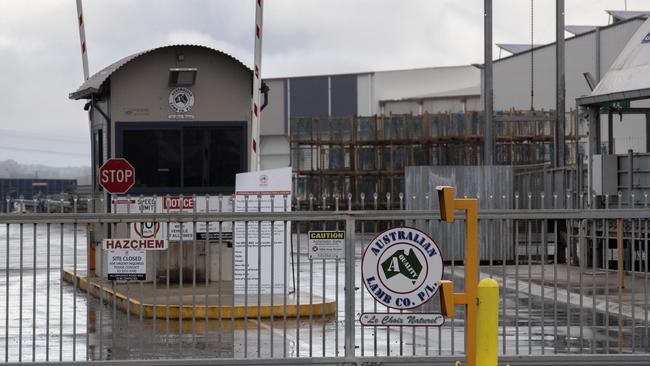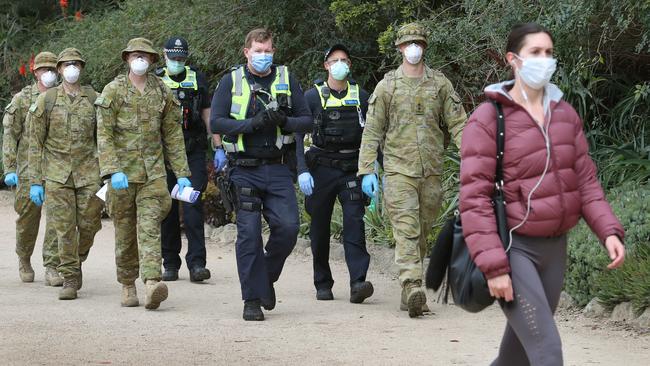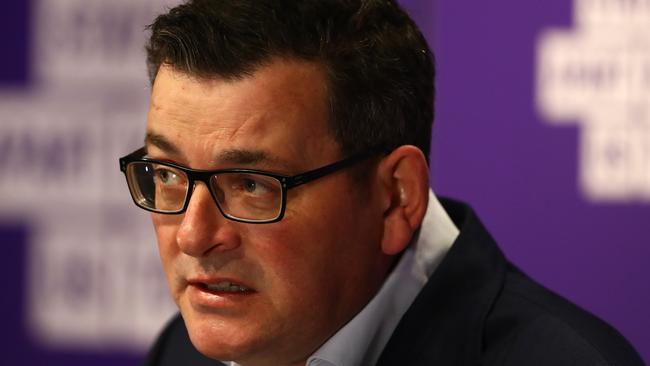Contact tracing under scrutiny amid mounting system failures
As Victoria’s coronavirus crisis grew this month, so has the state’s contact tracing team. But a combination of human error and delays has impacted its capacity to contain the second wave of the virus — and now, hard questions are being asked.
A young Victorian who works at an abattoir recently tested positive to coronavirus.
After being tested, he went and got a massage.
Later, he mixed with people who worked and went to school in the area.
By the time Department of Health and Human Services staff were in touch to try to stop the spread of the virus, the number of close contacts requiring tests had grown exponentially.
Their investigation was made more difficult by the length of time it took to get a client list from the masseuse who had treated the infected abattoir worker.
A combination of human error and delays in what is called “contact tracing” have affected Victoria’s capacity to contain a second wave of COVID-19, which spread like wildfire.
An inquiry is probing whether bungles in the hotel quarantine system can be linked to all cases in Victoria’s second wave, but questions have also been raised about whether failures in contact tracing allowed it to spread.
As the health crisis grew this month, so has the contact tracing team.
Staff make phone calls to first establish potential links between infected patients and other Victorians.


The process begins with an interview of a patient, who is asked for names and — hopefully — details of people with whom they had close contact since shortly before they felt sick.
This means people they have seen for 15 minutes face-to-face, or for two hours in a confined space.
A recent outbreak at Australian Lamb in Colac, for example, led to 718 staff tested for the virus because they all worked on the same factory floor as an infected worker.
The contact tracing form is manually filled out, then scanned and sent to DHHS for its central case database.
This is closely guarded information, with only select staff in hospitals and other health settings provided access, leading to complaints about restrictions.
Some healthcare workers say this command and control structure could contribute to delays in putting out local spotfires.
“They try to do everything from Lonsdale Street (DHHS headquarters) and there are delays in processing and then getting in touch with people,” a health professional said.
When Victoria’s first coronavirus wave appeared, the state contact tracing unit swelled from 30 expert investigators to more than 1000 staff. It was hailed as a relative success.
Now that a second wave has hit Melbourne with more force, a backlog of cases has appeared.

The tracing team has grown to more than 2100, and now includes call centre staff, bankers, and graduate paramedics.
After some inexplicable resistance, the Defence Force was called in to assist.
Meanwhile, more than 3000 active cases waited up to five days to be interviewed.
Premier Daniel Andrews now warns there are limits to any contact tracing operation if the virus gets out of control, because “no team can ever be big enough to deal with an exponential growth” in cases.
But he has avoided questions about whether there are flaws in the system, arguing people are doing their best in a difficult situation.
He has askes patients to suppress the virus by staying at home, thus minimising interactions with others.
Mr Andrews took aim yesterday at people not “picking up the phone” and a small number who do pick up the phone but “are not particularly interested in being involved in that process”.
Health workers put it less politely.
“Some people just lie about who they’ve seen,” one said.
Chief Health Officer Professor Brett Sutton said the aim was for patients to be contacted within 24 hours but admitted this didn’t always happen. Doorknocking can occur if no contact is made.


This week Prof Sutton said team members phoning from private or blocked telephone numbers might have their calls ignored.
Critics have pointed out this could surely be remedied by changing the caller ID system used by the team.
Other technological issues have also caused problems.
An automated text message response sent to some sick Victorians wrongly told them they could leave isolation when they should have remained quarantined.
Others who were not sick were told to stay in isolation.
Prof Sutton said there were also delays between when a pathology provider sent through a positive result to a patient and when the department was notified.
There was also no context provided about the individual’s work or family settings.
He urged people to start the tracing task themselves by creating a list of close contacts and their details.
Victoria is not currently following national advice on contact tracing, telling people if they don’t have symptoms they do not need to isolate. National advice is that you need to isolate until you get your test result.
The lack of information sent through with test results may explain the wildly different contact tracing response times reported by patients and industry.
Australian Food Group executive chairman Darren Vincent said the abattoir felt “abandoned” when a worker tested positive, while Guardian Childcare & Education chief executive officer

Warren Bright said his company was worried by “delays we are seeing between the receipt of a positive test result and the start of contact tracing”.
A father of two in Frankston revealed his family’s childcare case had been dealt with swiftly, however, praising contact tracers as “amazing”.
Some state MPs — on both sides of the political fence — have questioned why the second wave of the virus has been so much more destructive than the first wave.
One senior Labor MP said it would be useful to put contact tracing under the microscope during the inquiry into Victoria’s hotel quarantine farce.
That inquiry, led by former judge Jennifer Coate, is probing how the virus got out of hotels where infected travellers were supposed to be locked down.
“What I also want to know is, how did it spread so far once it got out?” the MP said.
This would independently test another critical part of the state’s response to the second wave.
And, perish the thought, test whether Victoria is prepared for a third wave if that appeared on the horizon.
MORE NEWS
WHAT LOCKDOWN WILL COST VICTORIAN ECONOMY
COPS, ADF PATROL MELBOURNE STREETS IN VIRUS FIGHT

